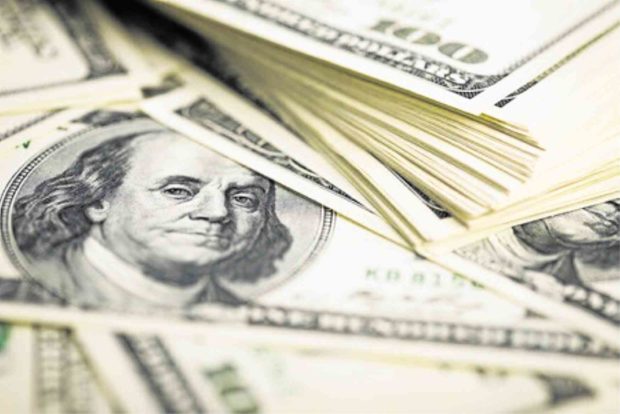The Philippines’ overall balance of payments position (BOP) in 2022 settled at a deficit of $7.3 billion, reversing from a surplus of $1.34 billion in 2021, according to the Bangko Sentral ng Pilipinas (BSP).
At the same time, the BSP’s gross international reserves (GIR) as of the end of December increased by a slightly larger amount than previously thought, reaching $96.1 billion instead of just $96 billion as preliminary data that was available earlier this month suggested.
“Based on preliminary data, this cumulative [full-year] BOP deficit was due to the widening trade in goods deficit as goods imports continued to surpass goods exports on the back of the increase in international commodity prices and resumption in domestic economic activities,” the BSP said in a statement.
In December alone, the country’s transactions with the rest of the world tallied at a surplus of $621 million, which meant a drop of 33 percent from the $911 million recorded in the same month of 2021.
Surplus in December
“The BOP surplus in December 2022 reflected inflows arising mainly from the [BSP’s] net foreign exchange operations and net income from its investments abroad,” the central bank said.
As for the dollar reserves, they represented 7.3 months’ worth of imports of goods and payments of services and primary income.
The BSP’s reserves were also about 5.9 times the country’s short-term external debt based on original maturity and 3.9 times based on residual maturity.
Addressing corporate chief executives at the World Economic Forum in Switzerland, Finance Secretary Benjamin Diokno said the GIR remained at a healthy level.
The ratios in December are “well above the International Monetary Fund reserve adequacy metric and higher than selected Asian and emerging economies,” Diokno said.
In 2022, the BSP’s GIR decreased by about $12.7 billion from $108.8 billion at the end of 2021.
Of this reduction, about $7.6 billion was incurred in the second half of 2022 alone when the Philippine peso was wilting against the US dollar and bottoming at 59:$1 in October.
Peso recouped losses
Still, the peso has regained ground over the past almost three months, partly due to falling global oil prices, which the International Energy Agency said has decreased $15 per barrel.
Yet, according to Deutsche Bank, the peso may be on a path of weakening again this year from 55:$1 in the first quarter through 56:$1 in the second quarter to 57:$1 in the third quarter.
The German bank forecasts that the peso will restrengthen to 56:$1 in the fourth quarter this year and then back to 55:$1 in the first quarter of 2024.
Last October, President Marcos said the government was ready to “defend” the peso, considering that further weakness could exacerbate high inflation.
This statement from the President was followed by similar comments from both BSP Governor Felipe Medalla and Secretary Diokno about preventing the peso from depreciating too much.
Diokno said the government could intervene in the foreign exchange market with $10 billion from the BSP’s international reserves.
By December, Governor Medalla said that while the regulator remained active in the foreign exchange markets, it was no longer in a situation of always dipping into the GIR.
